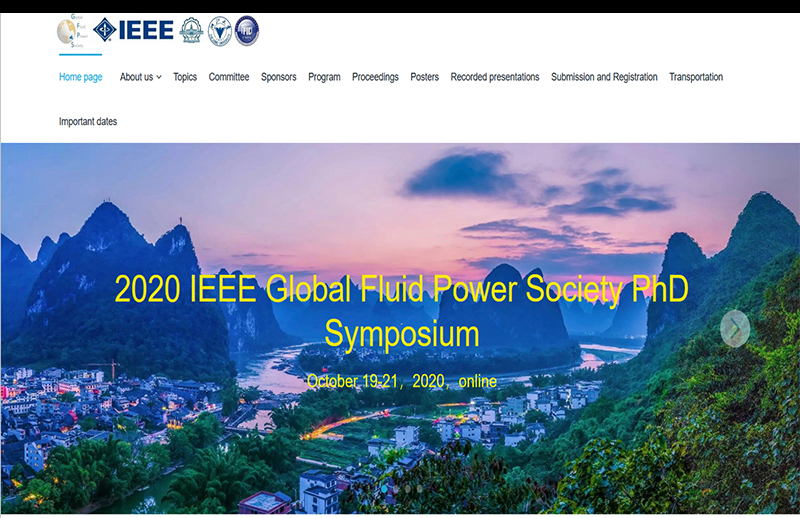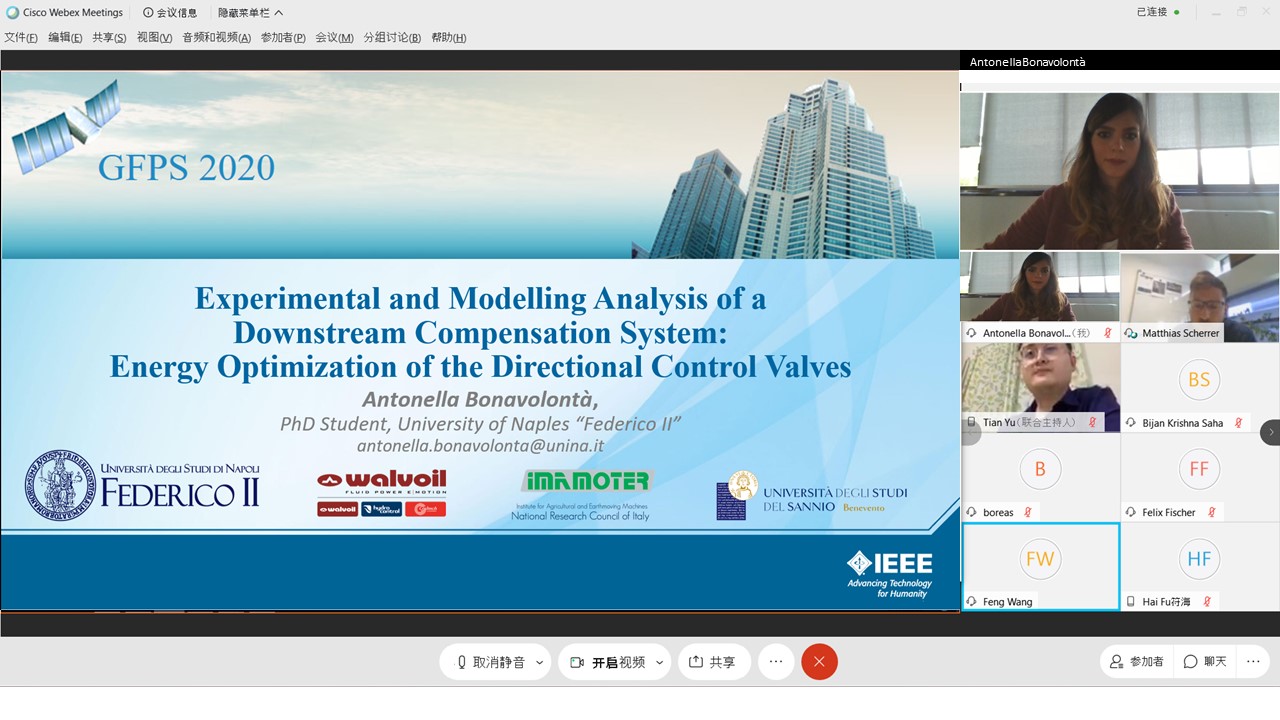
Walvoil at the 2020 IEEE Global Fluid Power Society PhD Symposium, Guilin (China)

Always present at the tables where the innovation of the future is outlined, from 19 to 21 October, 2020, Walvoil has attended the GFPS 2020, the congress promoted by the Global Fluid Power Society, that every two years gathers the Research world involved in fluid power and fluid techniques, and that this year was held online.

Below the resume of the paper presented by Walvoil with the contribution of: Antonella Bonavolontà and Emma Frosina – Federico II University, Naples, Pietro Marani – CNR-IMAMOTER, Davide Mesturini, Cesare Dolcin and Ulderico Busani – Walvoil Spa
Experimental and Modelling Analysis of a Downstream Compensation system:
Energy Optimization of the Directional Control Valves
Through a study on the Fluid Power innovations of the last years emerged that still few solutions have been successfully implemented for the optimization of the hydraulic circuits. The recent machine electrification trend makes even more urgent the need to renew the hydraulic systems to ensure greater performance and higher battery autonomy.
Moreover, in the specific field of ICE Off-road Vehicles, only about 10-15% of the available power at fuel level is actually transformed into useful energy for the actuators. Particularly the Directional Control Valves are responsible for the dissipation of about 35-40% of the hydraulic energy available at the pump level.
The traditional Directional Control Valves design solutions, in fact, neglect important opportunities for reducing losses and improve internal regeneration. Especially, energy recovery is rarely applied and in any case by means of important superstructures which considerably increase the costs of the system.
Even the “valveless“ systems theorized in the last few years present costs and complexity that are difficult to sustain on the mobile market.
In this paper we describe an innovative Directional Control Valve layout, based on the Downstream Compensation approach, that, in a simple and cost effective design, allows to recover a considerable amount of energy from both the inertial loads and the simultaneous use of multiple actuators at different pressure level.
This idea is based on concrete objectives and pays particular attention to cost sustainability, industrial manufacturability and system scalability.
The paper presents the simulation results and the energy saving estimation realized through a lumped parameter environment “Amesim Simcenter”. Additionally, the results of experimental activities show the innovative system performance, benefits and physical applicability.
GFPS 2020 – Program

 SCOPRI LE NOVIT� DI PRODOTTO
SCOPRI LE NOVIT� DI PRODOTTO
